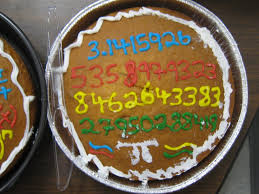In addition to incorporating history and a touch of mythology into Misaligned, I also try to bring in some science and math. In previous blogs, I’ve shared my love of prime numbers (all important numbers in the books are primes) and the basis for the extraordinary events of the series comes from String Theory. Admittedly, I took quite a few author’s liberties. No scientist proposes that the extra dimensions contain intelligent entities. That’s what makes the story a fantasy rather than a textbook.
I had little difficulty adding history to the story, but I struggled a bit in trying to work more science into it. In keeping with my interest in numbers, I decided to try and include some constants from science. No matter how hard I tried, I couldn’t pull it off, even with the more common constants, e.g., the speed of light in a vacuum (~186,000 miles/second or 671 million miles/hour), or the force of gravity on earth (9.80665 meters/second^2 or roughly 32.17 feet/second^2 for my readers in the US, Liberia, & Myanmar). Perhaps if I were a better writer I would’ve succeeded. As the English say if wishes were horses, beggars would ride, and I don’t ride.
 Not willing to give up, and still wishing to inflict my nerdiness on my dozens of readers, I switched to better known mathematical constants. By fifth grade most students know about Archimedes’ constant, π, defined as the ratio of a circle’s circumference to its diameter. It’s an irrational number, meaning it cannot be precisely expressed and there’s no pattern in its decimal digits (unlike e.g., 1/3).
Not willing to give up, and still wishing to inflict my nerdiness on my dozens of readers, I switched to better known mathematical constants. By fifth grade most students know about Archimedes’ constant, π, defined as the ratio of a circle’s circumference to its diameter. It’s an irrational number, meaning it cannot be precisely expressed and there’s no pattern in its decimal digits (unlike e.g., 1/3).
This property has led to two nerdy competitions: one using computers to calculate π’s digits (record ~10 Trillion digits) and the human reciting of π’s digits (record 67,890 in just over 24 hours). In common applications π gets abbreviated to 3.14 or in some cases the fraction 22/7. Both are accurate to within about ½ percent.  For really precise calculations such as controlling spacecraft, NASA uses 16 digits, or one digit short of the second (red) line in this pie created to celebrate π day (March 14th). It’s decorated with the first 38 decimals of π.
For really precise calculations such as controlling spacecraft, NASA uses 16 digits, or one digit short of the second (red) line in this pie created to celebrate π day (March 14th). It’s decorated with the first 38 decimals of π.
The other fascinating thing about π is that it’s found across mathematics (Euclidian Geometry, Number Theory, and Probability). It’s also in many of the laws of Physics (Heisenberg’s uncertainty principle, cosmological constant, and Coulomb’s law). As such, it was the perfect number for my story.
Here’s an excerpt from the second book of the series, Misaligned: The Silver Scepter, where I use π and the nearly as ubiquitous Euler’s number, e, (another irrational number) to connect the mystical power of the Silver Scepter to the underpinning science of the multiverse.
Please visit my website for more information about the Misaligned series
As always, thanks for reading!
Armen
Excerpt from The Silver Scepter:
Kolchak never finished his sentence, as the stones on the scepter began to flash on and off. First the red, then the yellow, followed by the blue. When they stopped flashing, the orange, green, and purple stones lit up in a similar alternating pattern. The cycle continued to repeat.
“What’s it mean?” Sharon asked.
“Did you detect any power source when you examined the scepter?” Kolchak asked Tom.
“No, all of our tests showed that other than the gems, it’s solid silver.”
“Do you think it’s, uh, one of the spirits trying to communicate with us?” asked Deputy Barnes.
“Well, if it is, it’s not using Morse code,” said Sharon, earning her quizzical looks from Tom and the Professor. “What? My father was an amateur radio enthusiast. He taught me Morse code.”
“You’re right, it’s not Morse, but there are some differences in the two flashing patterns,” said the professor.
“Really? They look pretty much the same to me,” said the Deputy.
The professor pointed to the scepter. “The primary colored gems take a little more than three seconds to flash through their sequence, which repeats five times before the other gems begin flashing. The secondary color sequence is a little faster and repeats seven times before giving way to the primary colored gems again.”
“Why would it do that?” asked the Deputy.
“I don’t know, but I would bet if we could time them more precisely, the longer sequence would clock in just over 3.14 seconds, while the shorter one just a bit longer than 2.71 seconds,” Kolchak said.
Tom raised his eyebrow. “You’re thinking Pi and Euler’s number?”
“Yes, mathematics and mysticism seem to have a lot in common,” said Kolchak.
“I’ve heard of Pi, but what’s Euler’s number?” Sharon asked.
Tom spoke up. “Like Pi, Euler’s number is an irrational number that cannot be represented by the ratio of any integers. It’s the base number for the natural logarithm and appears in the solutions to many probability and number series problems. For example, it’s part of the solution for the continuous compounding of interest problem.”
When several of the others gave him strange looks, he smirked. “I was a double major – archeology and math.”
“That’s all nice, but it doesn’t help us figure out what’s going on, or what we should do for the Sachem,” said the professor.
Before anyone could answer, there was a blinding flash of light and a bone-numbing sensation of cold. Both lasted for little more than an instant, which culminated in a blood-curdling scream from Sachem Cornplanter.
For additional information please visit:


I suspect the numbers are too much for most people. I do my best to keep them from interfering with the story. I doubt most of my readers pick up on them, but I’m happy for those who do. As always, thanks for sharing your thoughts.
Always enjoy your blog. You’re way too deep into the numbers thing for me, but that what make your writing so interesting. Loved the gravity picture. My grandson is fascinated by the Pi Principle. I forwarded you blog to my daughter hoping she will make him a Pi cake.